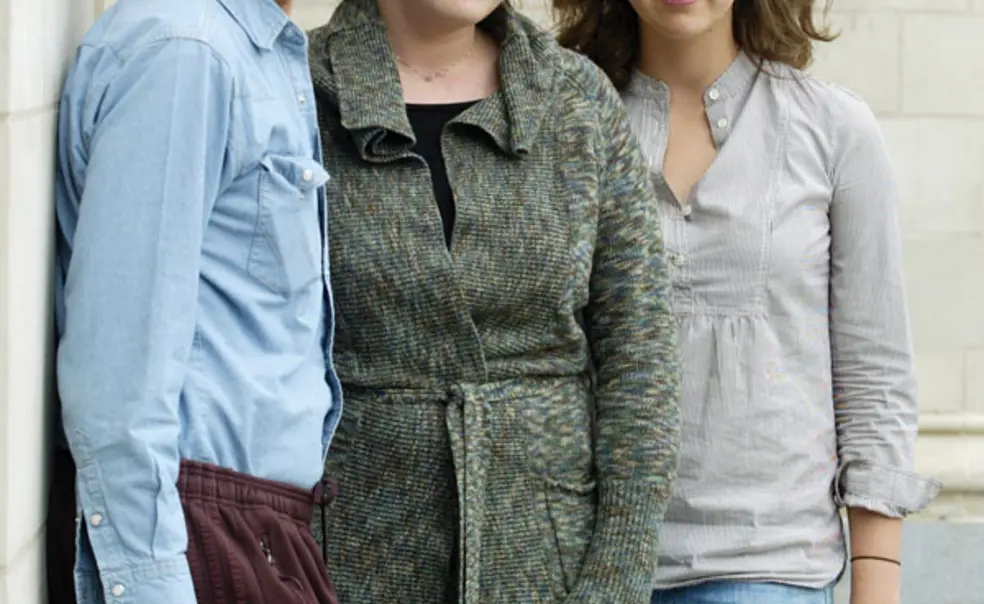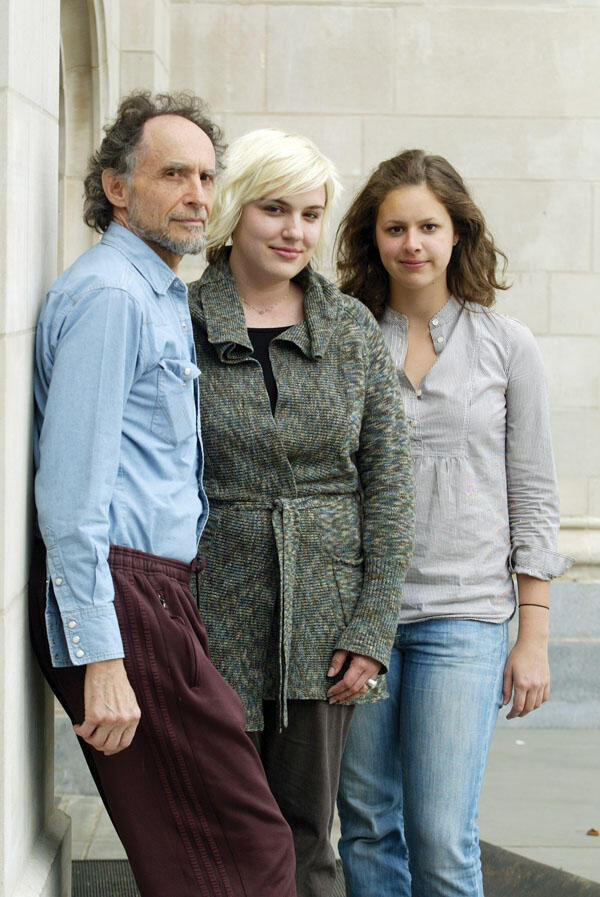Making art out of a cultural divide
Atelier gathers testimony from conservative Christains and nonbelievers
During the 2004 presidential election, playwright Stephen Wangh was struck by the way some media commentators denigrated George Bush supporters, while members of the Christian right belittled liberal humanists. The rhetoric from both the right wing and secular liberals, he says, “seemed equally righteous.” Wangh thinks, in retrospect, that one of his own works, The Laramie Project, about homophobia in Wyoming, had “demonized the religious right.”
The cultural divide playing itself out in politics and American culture, he thought, might make fodder for a play. He called Kristin Dombek, at the time a graduate student in English at New York University where Wangh was teaching acting, and suggested exploring that clash in a documentary theater piece. They began interviewing people on both sides of the divide — evangelical Christians and nonbelievers — about their religious and political views.
This semester Wangh, “an agnostic or an atheist,” and Dombek, a lecturer in the Princeton Writing Program and a former evangelical Christian who says she is “working on being an atheist,” are continuing their project as they lead “Atelier 499/Theater 499: The Testimony Project: Documentary Theater.” The project will culminate with performances May 9–10 in Whitman College’s theater.
The instructors and the 14 students in the theater workshop — atheists, agnostics, evangelical Christians, Catholics, a Buddhist, and a secular Jew — aim to “open a space in which people of many opinions can see the likenesses and the differences in their ways of viewing the world,” says Wangh, a visiting faculty member at Naropa University in Boulder, Colo., and a guest artist in Princeton’s Atelier. That dialogue starts in the class setting, as students explore each other’s religious and political views. The students also interview other people on and off campus.
After Atelier students Erica Greil ’10, who is Catholic and took last year off to ponder becoming a nun, and Katie Seaver ’10, an atheist, interviewed each other, Greil began to see how similar are their ideas about grief, family, and goodness. She was “amazed,” she says, having never had a deep conversation about such issues with an atheist. Another student, Heather May ’10, a religion major from England who is agnostic, admits that it has been difficult talking to evangelicals. “I find the language very alienating,” she says, referring to statements such as “I live my life in the arms of God.”
In choosing people to interview, the instructors and students seek those with interesting stories — a gay male friend who is considering becoming a priest, a Jewish student who lost his faith at Princeton and is now atheist, activists and counselors in an anti-abortion pregnancy crisis center. In March several students and Dombek traveled to an evangelical megachurch in Grand Rapids, Mich., and another group of students headed to New York to interview reproductive-rights activists.
During a class session in Whitman College’s theater in late February, the students read aloud snippets of interviews they had done so far, to see what might work on stage. The students also have been researching issues such as apocalyptic belief and rhetoric and controversy over “family values” to help them shape the final work.
As of mid-March, the students and instructors didn’t know where the production was headed — what the central theme would be, which interviews would end up in the play — or how it would all come together. The messiness of the process, says Wangh, is “terribly uncomfortable.” At times, he adds, the students ask, “What is this about?” And he replies, “We don’t know yet.”













No responses yet